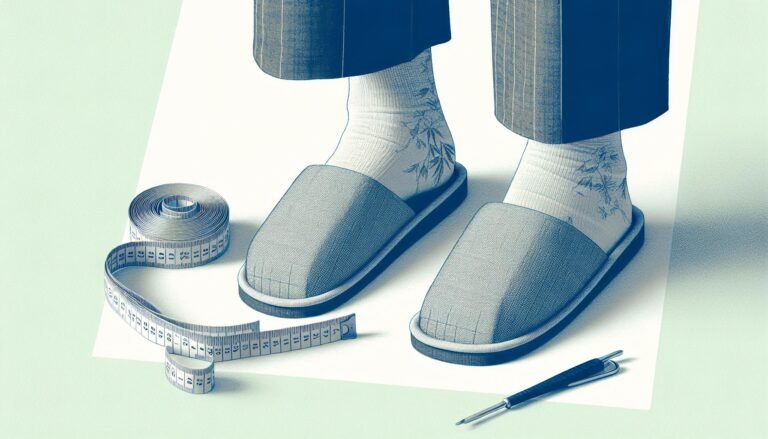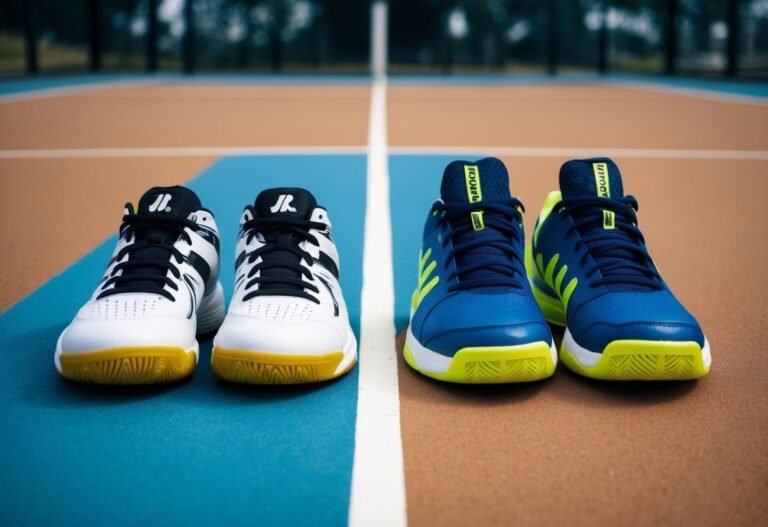What Does PS Mean in Shoes? Understanding the Sizing and Designations
Parents often encounter the term “PS” when shopping for footwear for their young children. PS stands for Preschool Size, which is specifically designed for toddlers and preschool-aged kids, typically between the ages of 3 and 5. Understanding this term is important for finding the right shoe size that supports healthy foot development.
Choosing the correct PS shoe size ensures that children have proper support and comfort as they play and grow. Shoes labeled as PS generally fit foot lengths from about 6.5 to 8.375 inches. Knowing how to measure and select the right size can make a significant difference in your child’s daily activities.
By recognizing what PS means in shoes, parents can make informed decisions that contribute to their child’s well-being. This guide will explore the details behind PS sizing and how to ensure a perfect fit for preschoolers.
Understanding Shoe Sizing Terminology

Shoe sizing can be confusing, especially with various terms and acronyms used to classify sizes for children. Understanding these terms helps in making better purchasing decisions, ensuring the right fit for kids’ shoes.
Definitions and Acronyms
Shoe sizing terminology includes various acronyms, each indicating a different category or size group. Common terms are “TD,” “PS,” and “GS.”
- TD stands for “Toddler” and typically covers sizes for children aged 1-3 years.
- PS refers to “Preschool,” aimed at kids from ages 3-5. It includes sizes ranging from 6.5 to 8.5 inches in foot length.
- GS means “Grade School,” which fits older children, usually ages 6-12, focusing on sizes that accommodate growing feet.
Understanding these acronyms helps parents select appropriate footwear based on their child’s age and foot growth stage.
The ‘PS’ in Shoe Sizes
The ‘PS’ designation is crucial for identifying shoes meant for preschoolers.
- PS shoes are specifically designed for children approximately 3 to 5 years old.
- When looking for PS sizes, it’s essential to measure a child’s feet accurately and refer to a size chart.
- Different brands may have slight variations in sizing, so it’s wise to check individual brand charts.
The average foot length for this age group typically ranges from 6.5 inches to 8.5 inches, ensuring a proper fit.
Comparing ‘TD’, ‘PS’, and ‘GS’
Comparing toddler, preschool, and grade school sizes aids in understanding children’s shoe needs.
- TD shoes fit toddlers with foot lengths from about 3.5 to 6 inches.
- PS shoes cater to slightly older kids, with lengths between 6.5 and 8.5 inches.
- GS shoes, which fit older children, can be from 9 to 13 inches or more, depending on the size.
Parents should recognize the differences in sizing to make informed choices and avoid common mistakes, such as selecting a size that does not match their child’s current foot length.
Measuring for the Perfect Fit

Getting the right shoe size is essential for comfort and support, especially for children in PS shoe sizing. Accurate measurements can prevent issues with fit, like insufficient arch support or cushioning. Proper measurement can also accommodate wide or narrow feet, ensuring the best fit.
The Importance of Accurate Measurements
Accurate foot measurement is crucial for finding the right shoe size. An ill-fitting shoe can lead to discomfort and even foot problems over time. A foot’s length, measured from heel to toe, is the primary dimension used in shoe sizing.
In children, shoe size changes rapidly, making frequent measurements necessary. Parents should measure their child’s feet regularly to ensure the right fit. A size too small can pinch their toes, while a size too large can cause instability. Proper measurements help to select shoes that provide adequate arch support and cushioning.
Tools for Measuring Foot Size
Several tools can help measure foot size effectively. A simple ruler or measuring tape can work well. To use these tools:
- Measure Length: Place the heel against a wall and measure from the wall to the tip of the longest toe.
- Measure Width: Measure the foot’s widest part, which is usually across the ball of the foot.
Another useful tool is a foot-sizer, which can provide a more precise measurement. Companies often have specific sizing charts that can aid in selecting the correct shoe size.
Parents can also take their child to a shoe store for a professional fitting. These experts can assess foot shape and provide personalized recommendations. This ensures the best fit for PS shoe sizing, accommodating both width and length, which is critical for children’s growing feet.
Shoe Size Conversion

Understanding shoe size conversions is essential for selecting the right fit. Different regions use various sizing systems, primarily in the US, UK, and EU. Preschool sizes, such as PS, also need special attention for accurate fitting.
US, UK, and EU Size Charts
Shoe sizes differ across the US, UK, and EU systems. The US uses a numeric system, while the UK size is typically one size smaller than the US. For instance, a US size 6 is about a UK size 5. The EU system employs a metric approach, using centimeters to denote the length of the foot.
A helpful conversion chart looks like this:
| US Size | UK Size | EU Size |
|---|---|---|
| 6 | 5 | 38 |
| 7 | 6 | 39 |
| 8 | 7 | 40 |
Converting sizes is crucial, especially when buying shoes for kids, as their feet grow rapidly and sizing may differ among brands.
PS Size Chart and Interpretation
PS stands for Preschool, specifically designed for children aged 3 to 5 years. The PS shoe sizes typically range from 6.5 to 8.5 inches in foot length. It is vital to note that these measurements can slightly vary by brand, so checking the specific PS size chart of the manufacturer is recommended.
For example, a PS size 10 is suitable for toddlers with a foot length of about 7.5 inches.
When buying PS shoes, always measure the child’s foot properly. This helps ensure that the shoe fits well, promoting comfort and support as kids grow and play.
Factors Affecting Shoe Size Selection for Children

Choosing the right shoe size for children involves understanding their unique developmental stages and managing the effects of rapid growth. A proper fit is essential to support healthy foot development and comfort.
Developmental Considerations
Foot development varies significantly between infants, toddlers, and preschool-aged children. During early years, children’s feet grow rapidly, becoming wider and longer. Therefore, selecting the right shoe size helps in supporting their foot arch and overall health.
Parents should consider the shape and size of their child’s foot. Many children have wider feet, especially during toddler years. A shoe that accommodates this shape can help prevent discomfort and other foot issues.
When shopping, parents should measure their child’s feet regularly. Using a foot measuring tool can ensure an accurate fit. This is crucial since foot size may change more frequently than expected, especially in active children.
Growth Spurts and Sizing Up
Growth spurts can occur suddenly in children of all ages. For example, a toddler may go up a full shoe size in just a few months. Parents should be vigilant and check their child’s shoe size frequently during periods of rapid growth.
It’s also important to keep in mind how different brands fit. Some shoes may run smaller or larger than others, affecting choice. Always consult size charts specific to each brand to find the best fit.
Comfort should remain a priority. If a shoe feels tight or pinches, it’s a sign the child may need a larger size. Regularly assessing and adjusting shoe size helps ensure children maintain the comfort needed for their growth and activities.
Shoe Shopping for Kids

Shoe shopping for kids involves careful consideration of comfort, fit, and brand quality. Choosing the right shoes can significantly impact a child’s foot health and overall well-being. Here are crucial factors to keep in mind during the process.
Comfort and Fit
When choosing shoes for children, comfort and fit should be the top priorities. Ill-fitting shoes can lead to pain and long-term foot problems. A proper fit means there should be about a thumb’s width of space between the end of the shoe and the child’s toes.
Parents should pay attention to the shoe’s width as well. Some kids may have wider or narrower feet, so checking the sizing chart for each brand, like Nike or Adidas, is essential. Additionally, trying shoes on later in the day can help, as feet tend to swell.
Consider shoes with features like cushioned insoles and flexible soles. These elements enhance comfort and support, making it easier for kids to run and play.
Evaluating Shoe Brands and Models
Different shoe brands offer various benefits when selecting footwear for children. Nike, Adidas, and Reebok are popular choices known for their quality and style. Each brand has unique sizing and fit characteristics, so parents should explore options.
It’s important to review different models within a brand. Some shoes may focus on breathability, while others emphasize durability. Online platforms like StockX can provide access to specific models and price comparisons.
A child’s activity level and foot structure may guide the choice between athletic shoes or more casual options. Always assess the brand’s reputation for comfort and foot health before making a decision.
Online Shopping vs In-Store
Shopping for kids’ shoes online has its perks, such as convenience and a wider selection. Websites often carry a greater variety of sizes and styles than physical stores. However, measuring a child’s foot beforehand can help avoid size mismatches that lead to ill-fitting shoes.
In-store shopping offers the advantage of trying shoes on. Parents can identify signs of a good fit or discomfort more easily. Additionally, store staff can provide informed recommendations based on experience and knowledge of shoe brands.
While online shopping is swift, visiting a store can reduce the risk of purchasing shoes that do not meet the child’s needs in terms of comfort and fit. Combining both methods can lead to the best results.
Recognizing Quality in Children’s Shoes

Adapting to various fashion trends
Handmade leather shoes possess a unique ability to stay relevant across different fashion eras. Their classic designs make them adaptable to current trends while retaining their innate charm. This timeless quality ensures they won’t be relegated to the back of your closet once fads fade.
Their inherent versatility also extends to functionality. Many styles are suitable for multiple occasions, offering both aesthetic appeal and practical benefits. You might opt to wear elegant loafers for a sophisticated touch at semi-formal events. This makes investing in hand-stitched leather shoes a wise choice for anyone looking to combine style with substance.
Choosing the right children’s shoes is essential for their foot health and overall comfort. This section will focus on the key aspects of materials and construction, as well as crucial support features that should be considered when selecting quality footwear.
Materials and Construction
Quality shoes are typically made from breathable materials that promote airflow. Common materials include leather, canvas, and synthetic options. Leather offers durability and comfort, while canvas is lightweight and easy to clean.
The construction of the shoe also matters. Look for shoes that have reinforced stitching to prevent wear. Quality shoes often feature flexible soles that bend easily with a child’s foot, allowing for natural movement.
Additionally, consider the lining of the shoe. A soft, moisture-wicking lining can help keep feet dry, which is important for preventing blisters. Parents should inspect shoes for any rough edges or seams that might cause discomfort.
Support Features
Support features are vital for a child’s developing feet. Look for shoes with proper arch support to help maintain foot shape and promote good posture. It can prevent flat feet and other issues.
Cushioning is equally important, as it absorbs shock during walking or running. Shoes that have foam insoles or gel padding can enhance comfort.
Ensure that the heel area provides stability without being too rigid. A well-supported heel keeps a child’s foot secure, reducing the risk of slips or falls. Properly designed shoes cater to a child’s specific foot shape, ensuring they receive the support they need as they grow.
Navigating Size Differences

When purchasing PS shoes, understanding size variations is essential. Children’s shoe sizes can differ between boys and girls, and knowing when to opt for a larger size can ensure proper fit and comfort.
Boys’ vs Girls’ Size Variations
Boys’ and girls’ shoe sizes often have slight differences. In the PS category, sizes may vary based on brand and design. Typically, boys’ shoes may have a wider fit than girls’. This means that a boy’s PS shoe could feel snug on a girl and vice versa.
For example, a PS size 10 for boys might be comparable to a PS size 10.5 for girls in terms of width. Families should consult specific size charts for brands like Nike and Adidas to make informed choices. Additionally, some brands offer gender-neutral options, providing flexibility in fittings.
When to Choose a Larger Size
Choosing the right shoe size is crucial for a child’s comfort. Parents should consider opting for a larger size if their child’s foot is close to the end of the current shoes. A general rule is to allow about a thumb’s width of space between the end of the shoe and the child’s longest toe.
If a child experiences discomfort or if their shoes feel tight, it may be time for a larger size. Also, consider shoe width when selecting PS shoes, as some brands offer different width options. Keeping track of foot growth and regularly measuring foot size contributes to a better fitting shoe over time.
Frequently Asked Questions

This section addresses common inquiries related to the PS sizing in shoes. It provides clear answers about the differences in sizing, fitting implications, and specific contexts associated with PS shoes.
How do PS sizes differ from standard shoe sizes?
PS sizes are specifically designed for preschool-aged children, typically between the ages of three and five. Standard shoe sizes may not accommodate the unique foot development and growth patterns of this age group. This means that PS sizes might be smaller or have a different fit compared to regular children’s shoe sizes.
What implications does the PS designation have for shoe fitting?
The PS designation indicates that shoes are tailored for preschoolers. This means the fitting is generally broader and more flexible to support active play. Parents should consider the specific foot development and width of their child’s feet when choosing PS shoes.
In what context is PS used when referring to footwear?
PS is a term used primarily in children’s footwear, especially by brands focusing on sizes for young kids. It helps distinguish shoes that are made for preschoolers from other categories, such as toddler or school-age sizes. It ensures parents select the right type of shoe for their child’s age group.
Is there a difference between PS and GS sizing in Jordan shoes?
Yes, PS (Preschool) and GS (Grade School) sizes differ significantly. PS sizes cater to younger children aged 3 to 5, while GS sizes target older children typically aged 6 to 12. Each size category reflects different foot shapes and developmental needs.
What does the term PS indicate about the style or features of a shoe?
The PS designation often implies that shoes are designed for comfort and ease of wear. Features may include lightweight materials, easy closures, and cushioned soles suitable for active preschoolers. The style is usually more playful and colorful, appealing to young children.
Can adults wear shoes that are labeled as PS, and how do they fit?
While adults can technically wear PS shoes, the fit will likely be too small for most. PS shoes are sized for young children’s feet, which differ in shape and size from adult feet. It is advisable for adults to choose shoes specifically designed for their size and foot characteristics.












